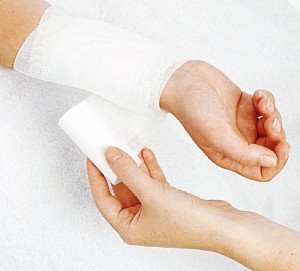People who play volleyball and basketball are susceptible to jammed finger. It is an impact injury with agonizing pain and swelling in the finger joint. The finger can be jammed when an object hits the fingertips and will cause instant pain and swelling in the finger. The finger cannot be moved because of severe pain. It can be treated at home using the application of an ice pack and immobility of the joint.
Causes of a jammed finger
- A jammed finger can be caused by strong impact on the fingertips which causes damage to the ligaments and joints of the finger.
- Jammed finger is common among people playing sports such as volleyball, football and basketball.
- If the finger is bent accidentally in an uncomfortable way and when the finger is damaged by a cricket ball or a forceful activity which causes damage to the tendons and ligaments that are attached to joint of the fingers.
Treatment

- If the affected finger is suspected with a fracture, provide the individual with anti-inflammatory and pain medications in order to lessen pain and swelling.
- Rest the injured finger and avoid any forms of straining. Any strenuous activities will make the condition worse and delay the healing process. Apply a splint on the jammed finger by putting two ice cream sticks on both sides of the finger and apply adhesive tape in order to secure in place. This will prevent the finger from bending as well as other forms of movement.
- Apply an ice pack over the affected area at least 3-4 times in a day for 5-10 minutes since it helps minimize inflammation and pain. Remember to avoid applying ice directly over the affected area, instead place ice cubes in a cloth and apply it over the affected finger.
- Medications such as arnica can help lessen pain and swelling.
- Elevate the jammed finger above the level of the heart.
- Drink ginger tea at least two times a day and at night. Before sleeping, mix ½ teaspoon of turmeric powder in a glass of warm milk. Perform this routine for seven days. Ginger tea and turmeric possess natural anti-inflammatory properties.
Once the injury is treated and pain and swelling are controlled, start physical therapy on the injured area in order to regain strength and range of motion such as the following:
- Gently stretch the fingers back toward the top of the forearm and then rotate the injured finger in a circular motion with the other hand. Pull the damaged finger down to the interior of the forearm. This will help stretch out the affected muscles and soft tissues.
- Hold a tennis ball in the hand and squeeze it as hard as the injured finger will allow, hold this for a few seconds and then slowly release the pressure. Do this at least 10 times or more.
- Perform push-ups and use the fingertips to hold the weight. It will both strengthen the hands and forearms and helps build strength in the injured hand.
